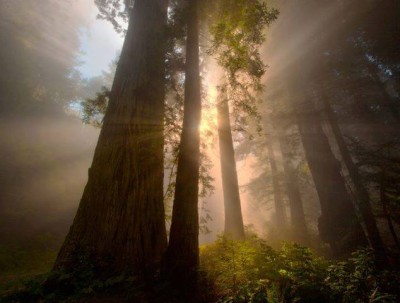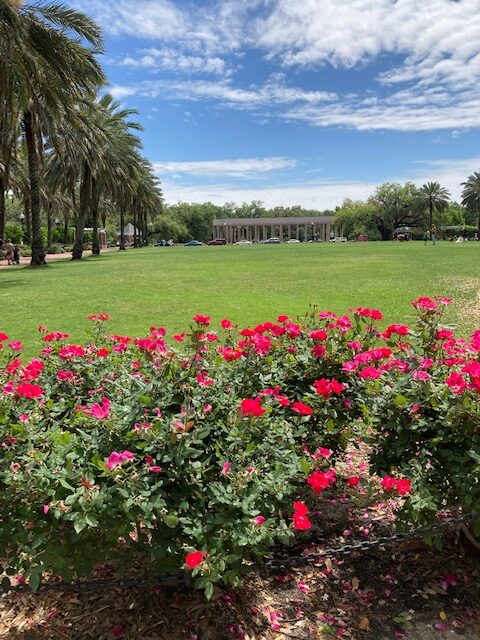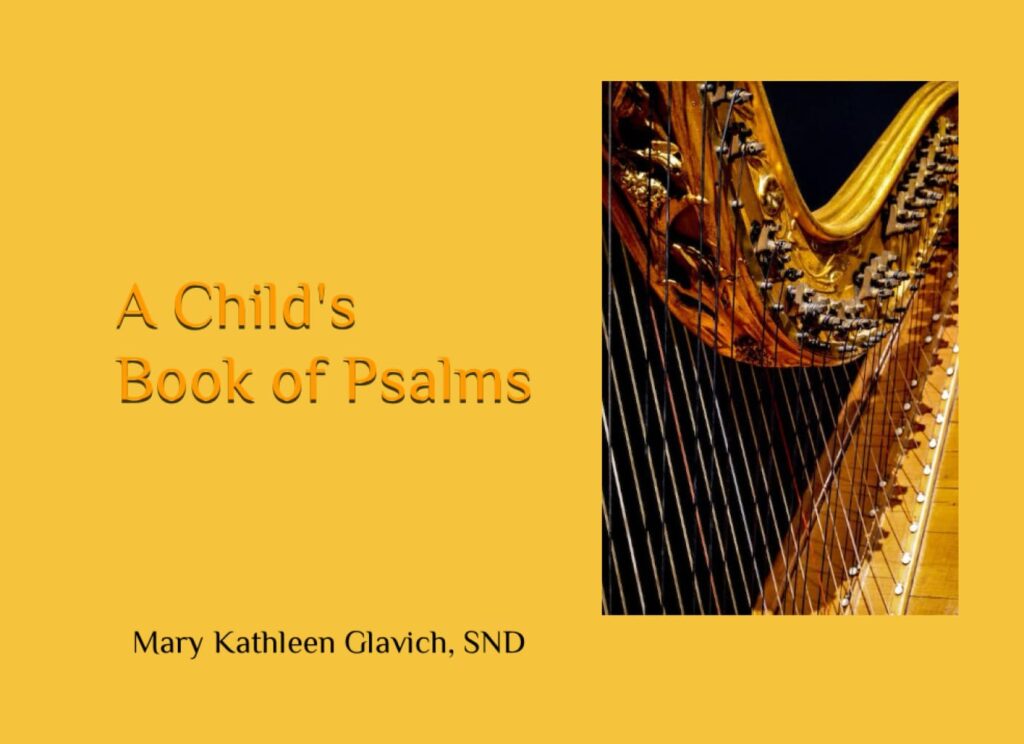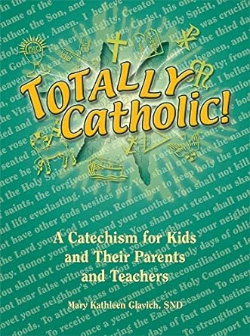
On Saturday we Sisters of Notre Dame spent an hour on Zoom focusing on caring for creation. It was based on Pope Francis’s Laudato Si’ where he says, “There is a nobility in the duty to care for creation through little daily actions, and it is wonderful how education can bring about real changes in lifestyle.” (LS 211). I thought it is a good time to share again the introduction to my book Voices: God Speaking in Creation, which was just republished last week . . .

“I said to the almond tree, ‘Sister, speak to me of God.’ And the almond tree blossomed.” ~ Nikos Kazantzakis
Creators are mirrored in their creations. A song reflects the composer; a painting, the artist; a book the author. In the same way, the universe, the masterpiece of the supreme creator, reveals God. Its variety, its intricacy, and its magnitude attest to God’s wisdom and power. Every created thing is an epiphany, echoing some aspect of the divine Being.

To behold a snow-topped mountain, its massive rocky slopes jutting boldly into the sky, is to know God’s majesty. To sit at the foot of a waterfall and watch its refreshing rush of water cascade into a clear, deep pool is to see God purity. To stroll through woods of lovely ferns, mosses, and lofty trees is to be enveloped with the peace and serenity of God. The fragile daisy with its velvety white petals and bright yellow center tells of the Creator’s gentleness while the shimmering, iridescent rainbow arched across purple-gray clouds bespeaks his beauty. A newborn baby is evidence of God’s tenderness. Fire is a reminder of the energy of God’s love. A monkey shows God’s sense of humor, and a giraffe, his unpredictability.
The psalmist is attuned to the speechless voices of the universe. He sings of the stars in Psalm 19:1–4:

The heavens declare the glory of God,
the vault of heaven proclaims his handiwork;
day discourses of it to day,
night to night hands on the knowledge.
No utterance at all, no speech,
no sound that anyone an hear;
Yet their voice goes out through all the earth
and their message to the ends of the world.
St. Gregory of Nazianzus states in a hymn:
All things proclaim you—
things that can speak, things that can not.
All things breathe you a prayer,
a silent hymn of your own composing.
In the same tradition, St. Francis of Assisi the lover of nature, exclaims in his “Canticle of the Sun”:
Praise be to Thee, my Lord, with all Thy creatures.
Especially to my brother sun,
Who brings us the day and through him Thou dost brightness give;
And beautiful is he and radiant with splendor great,
Of Thee, Most High, he speaks.
More recently, the writings of the French theologian and philosopher Teilhard de Chardin, S.J., the notion of the creation manifesting the Creator is a mighty refrain, especially in The Divine Milieu: “…the great mystery of Christianity is not exactly the appearance, but the transparence, of God in the universe.”
Things are important to us. Partly spiritual, partly material beings, we live and work out our destiny in the realm of matter. How we use it and abuse it determines our eternity. We are free to expend and ravage the material universe for our own power and pleasure, or we can share it. We can let it go to ruin or we can show concern for it. We can regard the world as the lucky result of a coincidental combination of chemicals eons ago, or we can cherish it as the love-gift of a personal God who cares about us. The latter point of view opens for us the possibility of finding in material objects a source of prayer.

When the Word became flesh and lived with us among color, hardness, roughness, scent, and warmth, the Son of God reveled in the things of earth, the handiwork of the Father. Jesus saw that they were good, so good that he redeemed them along with us at the price of his life. Furthermore, he assigned them prominent roles in the act of redemption. During his public life, Jesus used concrete objects to teach. His audiovisuals were the birds of the air, the bread the women baked, the Temple in Jerusalem, and the roadside fig tree. Today, from the dimension where he dwells, Jesus reaches out in the sacraments and touches us with things: water, bread, wine, and oil. Matter has been christened by his presence.
And here is the Foreward to the book, which Bishop Robert Morneau graciously provided:
Flannery O’Connor, the brilliant author of fiction, wrote that “the writer operates at a peculiar crossroads where time and place and eternity somehow meet. His problem is to find that location.” Sister Kathleen’s reflections position us at the crossroads of sixteen images (e.g., sycamore tree, wine, turtledoves, towel). From the north come the writers of Scripture (evangelists, Isaiah, Tobit) sharing their experience of revelation regarding these images; from the south come the fiction writers (Henry van Dyke, Nathaniel Hawthorne, Flannery O’Connor) with their sensitivity to experience; from the east we encounter the perspective of philosophers (Teilhard de Chardin, Thomas More), and from the west some theologians (Thomas Aquinas, Thomas Merton) add their interpretation of life’s meaning and the paths that make up our own quilted lives.
Good writers are often noted for their extensive reading. The creative act is in seeing “the connections” among the many sources. Voices makes the connections between the insights of writers and the experiences of daily life, between universal principles and specific events of history, between the action of grace and intensive human struggle. Because those connections are made, we all see better and are enabled to live more deeply.
In his excellent book Inner Companions, Coleman McCarthy states, “Yet he [John Muir] rarely let a day pass that some word or thought was not jotted on an odd piece of pocket-crammed paper, stowaway thoughts traveling secretly between his soul and heart.” Not everyone is able to observe with care, much less articulate, those thousands of stowaway thoughts that hustle back and forth between our hungering soul and our thirsting heart. Sr. Kathleen has arrested several for us in these reflections. She has also captured many that pass between the memory and imagination, chambers within our souls and hearts that ground us in the past and draw us toward the future.
From the recesses of our scriptural tradition comes the image of Zacchaeus in the sycamore tree, whose soul was longing for so much more than wealth and status. From the heart comes the cry of the turtledove, pining and yearning for its mate. From the memory comes the towel of the Last Supper, providing an image that makes our discipleship one of service. From the imagination comes pouring forth a water jar, perfume, and abundant wine to slake our parched lives—stowaway thoughts set free and shared generously with all who want to listen.
In The Human Journey, a biography of Thomas Merton, Anthony Padovano gives one of the qualifications of a writer: “Writing is a vow of conversation rooted in years of silence. A writer who does not listen well never knows what to say. One enters the silence not to be alone but to learn how to speak.” Perhaps writers, in a sense, resemble good secretaries: people who record well what they hear and see. Writers are observers and lovers of the great conversations that fill our world. Voices is a work of a writer who listens to the hidden depths of images and records the conversations heard, the beauty seen. In an age of noise and frenzied activity, it is a delight to find someone who stopped by a snowy woods to enjoy the darkness of the winter’s night and the sound of falling snow.
A final reflection on writing, by G.K. Chesterton: “I have written the book, and nothing on earth would induce me to read it.” History would probably demonstrate that Chesterton was being facetious. Voices should be read by parents, subway commuters, teachers, pastors, bartenders, and yes, even the author. There is no way of exhausting the power and meaning of images. Because of this book, images have spoken to us once again.
Don’t miss the beautiful YouTube video below.
• What is one of your favorite creations?










